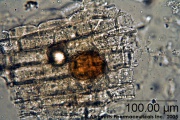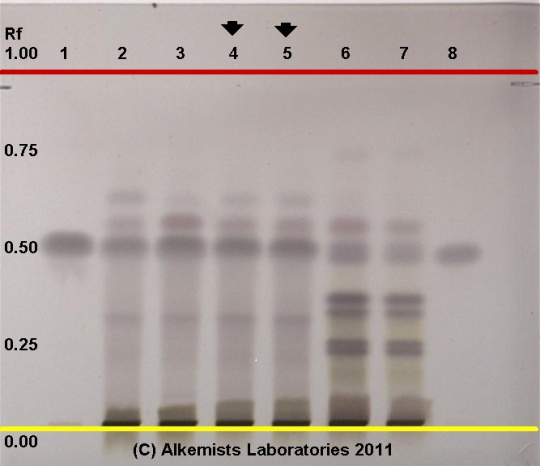Magnolia officinalis (bark)
(Nomenclature updated) |
(Various title corrections, Source additions) |
||
| Line 1: | Line 1: | ||
| + | {{DISPLAYTITLE:''Magnolia officinalis'' (bark) }} | ||
=Nomenclature= | =Nomenclature= | ||
| Line 11: | Line 12: | ||
|notes=See note following M. biondii. }} | |notes=See note following M. biondii. }} | ||
| − | =Macroscopic | + | =Botanical Voucher Specimen= |
| − | =Microscopic | + | =Organoleptic Characteristics= |
| + | |||
| + | =Macroscopic Characteristics= | ||
| + | =Microscopic Characteristics= | ||
{{Microscopy | source=Elan M. Sudberg, Alkemist Laboratories | {{Microscopy | source=Elan M. Sudberg, Alkemist Laboratories | ||
| companyimage= AP-LOGO-Laboratories Crop - Copy.jpg | | companyimage= AP-LOGO-Laboratories Crop - Copy.jpg | ||
| Line 26: | Line 30: | ||
| }} | | }} | ||
| − | = | + | =High Performance Thin Layer Chromatographic Identification= |
{{HPTLC | source=Elan M. Sudberg, Alkemist Laboratories | {{HPTLC | source=Elan M. Sudberg, Alkemist Laboratories | ||
| description=Magnolia (bark) (''Magnolia officinalis'') | | description=Magnolia (bark) (''Magnolia officinalis'') | ||
| Line 52: | Line 56: | ||
| }} | | }} | ||
| − | = | + | =Supplementary Information= |
| − | + | =Sources= | |
| + | <references /> | ||
Revision as of 01:31, 16 March 2014
Contents |
Nomenclature
Magnolia officinalis Rehder & E.H. Wilson Magnoliaceae
Standardized common name (English): magnolia
Pinyin name(s): hou po; hou po (bark of stem; twig; and root); hou po hua (flower bud)
Botanical Voucher Specimen
Organoleptic Characteristics
Macroscopic Characteristics
Microscopic Characteristics
|
High Performance Thin Layer Chromatographic Identification
|
Magnolia (bark) (Magnolia officinalis) Lane Assignments Lanes, from left to right (Track, Volume, Sample):
Reference materials used here have been authenticated by macroscopic, microscopic &/or TLC studies according to the reference source cited below held at Alkemists Laboratories, Costa Mesa, CA. Stationary Phase Silica gel 60, F254, 10 x 10 cm HPTLC plates Mobile Phase cyclohexane: ethyl acetate: HCOOH [6/4/0.2] Sample Preparation Method 0.3g+3mL 70% grain EtOH sonicate/heat @~50° C ~ 1/2 hr Detection Method 10% Ethanolic H2SO4 -> 115° C 15 min -> visible light Reference see Pharmacopoeia of The Peoples Republic of China, Volume 1, 1997
|
Supplementary Information
Sources
- ↑ Elan M. Sudberg, Alkemist Laboratories http://www.Alkemist.com
- ↑ Elan M. Sudberg, Alkemist Laboratories http://www.alkemist.com


